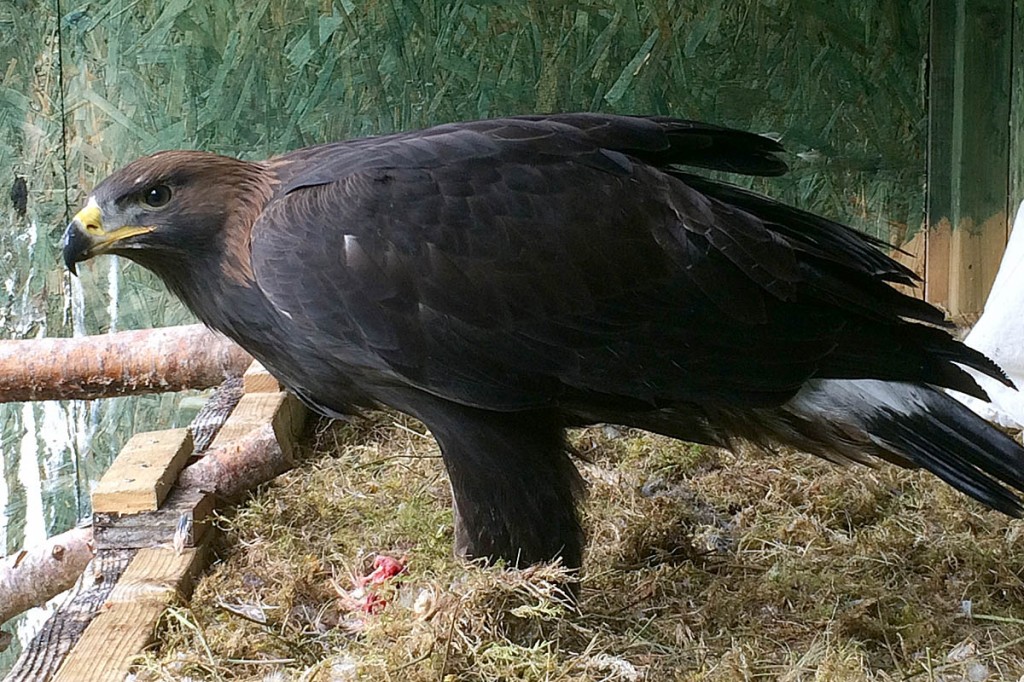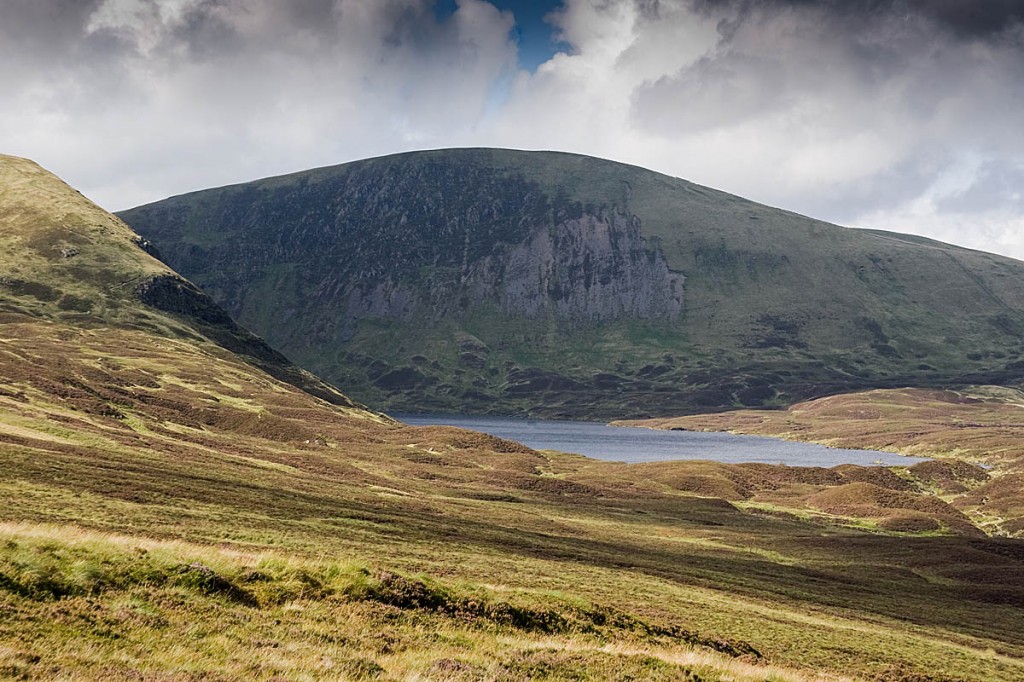Conservationists fear two golden eagles that were recently released in southern Scotland have been killed by a female of the species introduced into the area last year.
The South Scotland Golden Eagle Project said the behaviour of the female raptor, named Beaky, is very unusual.
A third young male eagle is being kept securely in an aviary in the area after the incident, in which one bird was killed and another has gone missing. The three males were satellite tagged.
The project aims to boost the number of golden eagles in Dumfries and Galloway and the Scottish Borders by bringing young birds from the Highlands and releasing them in a controlled way in the South of Scotland.
It said: “In early August, three young satellite-tagged male eagles were released. This followed the highly successful practices adopted last year and in other eagle release projects.
“One of two female eagles released last year, Beaky, who had been about 10 miles from the release site, returned to it and was seen to be aggressive and domineering towards the young males.
“She immediately began treating the release area as her territory, which is exceptional for such a young bird.
“It appears Beaky caused the death of one of the released young males, which is now undergoing a detailed, post-mortem investigation, and another young male is missing nearby.
“The third young male is safely secured in the aviary at the release area.”
Project workers had planned to bring between three and 10 young eagles south over the next four years. The project team has collected single eagle chicks from broods of young in the Highlands and raised and released them in an undisclosed location in the Moffat Hills area.
It said it identified that the best way of enhancing the fragmented and vulnerable population of golden eagles is through increasing the supply of young eagles, which will eventually recruit into the breeding population. Recent satellite-tagging work of golden eagles in Scotland showed that the South of Scotland golden eagle population is isolated from larger populations of the species from the Highlands.
After the incident, one of the project directors, Scottish Natural Heritage’s Professor Des Thompson, said: “This is distressing and extremely surprising. We have never heard of such incidents before, despite having worked with eagle release projects in other parts of Europe.
“For the project team, and the estates which kindly allowed us to take these male eagle chicks, this is very difficult.
“Our project has been 11 years in the making because it is crucial to ensure everything possible is done to protect the health and wellbeing of these birds. Such projects are very challenging, and we are determined for this project to succeed, having involved the best experts in this field to do this, and will share what we learn with other similar projects.”
Duncan Orr-Ewing, head of species and land management at RSPB Scotland, said: “This is an exceptional event and, while natural, incredibly upsetting.
“As the project is carefully monitored this event has been witnessed at first hand. The project will continue despite this setback, however we will thoroughly consider any future mitigation.”
Golden eagle expert Roy Dennis, a scientific adviser to the project added: “In natural golden eagle populations, territorial breeding eagles will attack and kill intruding sub-adults trying to take their place, and in the case of aged adults intruding sub-adults may kill them.
“This is normal population behaviour, but for newly flying juveniles to be attacked by a one-year-old is totally unexpected.”
The project team said it is monitoring the release site carefully. The remaining young golden eagle will be released at another site which has already been identified, after precautions to ensure it is suitable.
It added that it works closely with experts at the Edinburgh University Royal Dick Vet School, who have been closely involved in all stages of the release programme to support the monitoring of the eagles’ health and welfare.
“Given that Beaky has evidently established a territory around the release site, a new release site will be secured for next year,” a project spokesperson said. “The location of the release area is not publicised, and relies on an excellent and close relationship with the landowner.”
The project chair Mark Oddy said: “This is a really difficult time for the project team and the many supporters in local schools and the wider communities, who have been fantastically supportive. This incident is completely unexpected which makes this all the more difficult.
“We are doing everything we can to ensure the remaining eagle is fit and well.”

